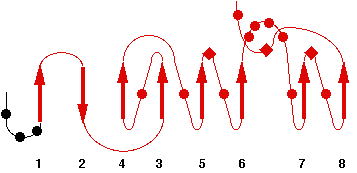7B1X
Name : Crystal structure of cold-active esterase PMGL3 from permafrost metagenomic library
Revelation date : 03-Nov-2021
Family : Hormone-sensitive_lipase_like
Gene_locus : psyck-PMGL3
PDB file : ESTHER: header of PDB entry RCSB: Full entry
Comment
Boyko, K.M.,Nikolaeva, A.Y.,Petrovskaya, L.E.,Kryukova, M.V.,Kryukova, E.A.,Korzhenevsky, D.A.,Lomakina, G.Y.,Novototskaya-Vlasova, K.A.,Rivkina, E.M.,Dolgikh, D.A.,Kirpichnikov, M.P.,Popov, V.O.
Ligand :
References (1)
| Title : Structural and Biochemical Characterization of a Cold-Active PMGL3 Esterase with Unusual Oligomeric Structure - Boyko_2021_Biomolecules_11_ |
| Author(s) : Boyko KM , Kryukova MV , Petrovskaya LE , Kryukova EA , Nikolaeva AY , Korzhenevsky DA , Lomakina GY , Novototskaya-Vlasova KA , Rivkina EM , Dolgikh DA , Kirpichnikov MP , Popov VO |
| Ref : Biomolecules , 11 : , 2021 |
| Abstract : Boyko_2021_Biomolecules_11_ |
| ESTHER : Boyko_2021_Biomolecules_11_ |
| PubMedSearch : Boyko_2021_Biomolecules_11_ |
| PubMedID: 33466452 |
| Gene_locus related to this paper: psyck-PMGL3 |
Representative scheme of Prolylcarboxypeptidase structure and an image from PDBsum server

